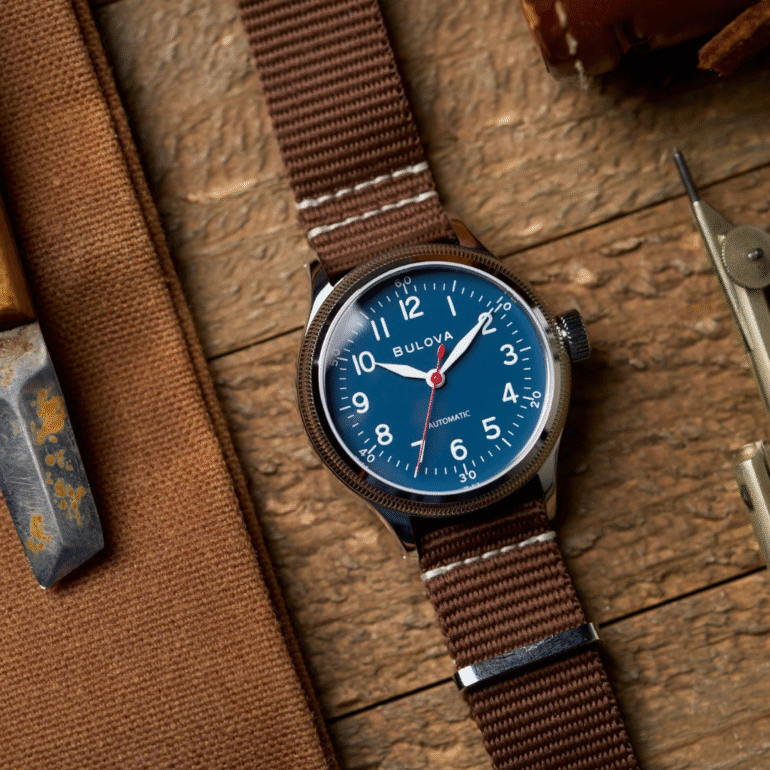America Runs on Bulova Time
Of all the American watchmakers, Bulova was the savviest when it came to advertising. Recognizing its power early on, Bulova sponsored the first horological radio advertisement in 1926 — “At the tone, it’s eight o’clock, Bulova Watch Time.”That same year, Joseph’s son Ardé offered a $1,000 prize to the first pilot(s) to succeed in a non-stop crossing of the Atlantic, sending each pilot who registered for the Orteig Prize — an offering of $25,000 by New York City hotel-owner Raymond Orteig beginning in 1919 — a Bulova Conqueror and a letter offering their $1,000 prize. The next year, an airmail pilot named Charles Lindbergh made history as the first person to make the flight.
Bulova capitalized on it, advertising their Lone Eagle watch that included a facsimile of a letter written by Lindbergh before his historic flight, thanking Bulova for the watch that “is my pleasure to wear, keeps accurate time and is a beauty.”Bulova’s legacy of firsts extended beyond radio. Shortly after the restriction on commercial ventures on television was lifted, Bulova ran the very first television ad on July 1, 1941. It ran for just ten seconds. The ad was seen by just 4,000 people viewing New York’s WNBT station and consisted of a static image of a clock placed over a map of the continental United States with a voiceover adding “America Runs on Bulova Time.”
The company led American watchmakers in marketing costs through the 1960s, leading to an expansive network of over 20,000 US distributors by 1968. A 1955 A.C. Nielsen Company survey showed that Americans saw more advertising for Bulova products than any other product in the world.
Bulova Goes to War
The conflict that would envelop the world in 1939 also relied on Bulova watches. In addition to aviation instruments, telescopes, navigation clocks, and time fuses, Bulvoa produced wrist watches for the armed forces that have become icons. The Ordnance Department field watch and A-11 and A-15 pilot watches have come to define both genres, codifying archetypes into forms they occupy to this day.
Following the end of the war, Ardé Bulova founded The Joseph Bulova School of Watchmaking, named after his father, who had passed away in 1935. The school was dedicated to offering tuition-free training to disabled veterans in watchmaking as a means of rehabilitation and job placement. While the school closed in 1993, its vision lives on through the Veterans Watchmaking Initiative. Inspired by the Bulova program, it serves the same mission. Bulova pledged its support to the organization shortly after its founding in 2017.
In the late 1950s, Bulova was selected to build a watch by the US Navy’s Bureau of Ships as an American alternative to the Swiss Rolex, Enicar, and Blancpain watches that the Navy had been testing. The resulting prototype, referred to as the MIL-SHIPS, never entered full production and remains a rare example of an early military dive watch.
Jacob Van Buren
2025-10-19 16:00:00

